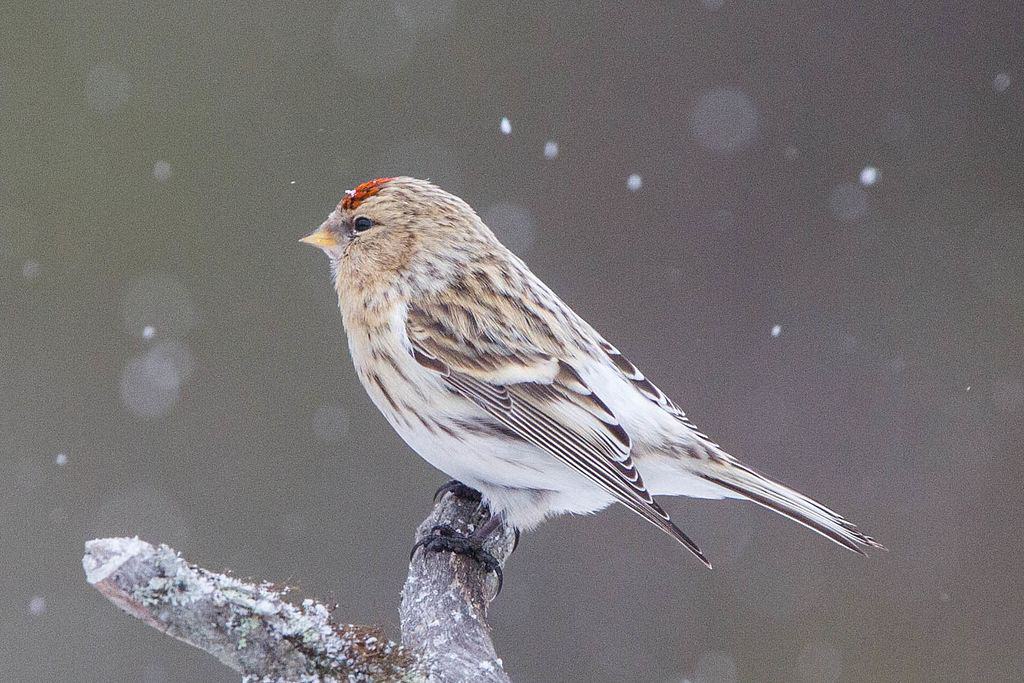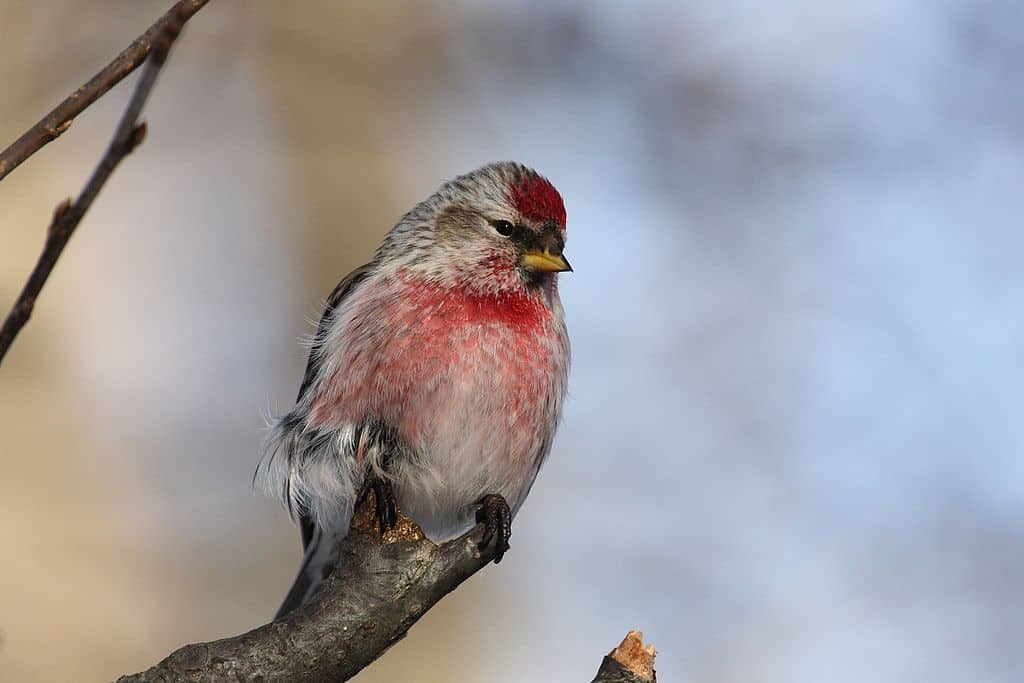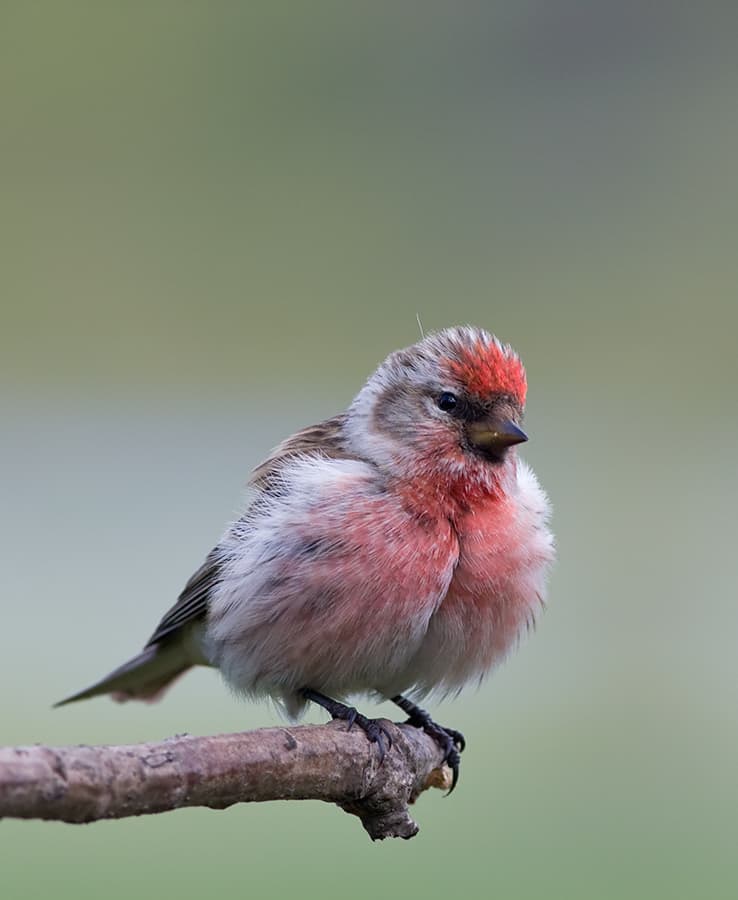Of the British birds that are popular in captivity, one family that seems to cause the most confusion is the Redpoll. There are only three species in the family and one is very different but the other two, the Lesser and the Mealy Redpoll are often the cause of confusion. So how do you tell the two apart?
Meet the Redpoll family
The Redpolls are part of the Fringillidae family of finches, often known as the Old World Finches, which contains other famous British birds such as the goldfinch, greenfinch and bullfinch. They have their own family, Acanthis and there are three distinct species that have a number of regional subspecies found in different parts of their range:
- Arctic redpoll (Acanthis hornemanni)
- A. h. hornemanni (Greenland Arctic redpoll)
- A. h. exilipes (hoary redpoll)
- Common redpoll (Acanthis flammea)
- A. f. flammea (mealy redpoll)
- A. f. islandica (Icelandic redpoll)
- A. f. rostrata (Greenland redpoll)
- Lesser redpoll (Acanthis cabaret)
Arctic redpoll
The Arctic redpoll is the one that causes the least confusion because of it much paler than its two cousins. It is found in North American and Eurasia and is known as the hoary redpoll in North America while there is a subspecies known as the Greenland Arctic Redpoll that lives, as the name suggests, in Greenland.

In appearance, it is paler than the other redpolls and has an unstreaked pale rump as well as a pale vent area. The Greenland race is very pale but all have a slight yellowish tinge to their plumage. They have a bright red patch on the head. They are typically 12-14cm in length and weigh around 12-16 grams. Females have more streaks on the breast.
Common redpoll a.k.a Mealy Redpoll
The Common redpoll is most often known as the Mealy Redpoll in captivity. It is also found across Eurasia and Northern America with subspecies from areas such as Iceland and Greenland, often clubbed together as ‘north-western redpolls’. They don’t usually come to the UK but occasionally are seen along the east coast during winter when migrating.

These birds are brownish-grey in colour with dark streaks and a bright red patch on the head. Their breasts often have red feathers and they are more streaked than the Arctic species. The rump is streaked and there is a dark brown streak across the vent. They are also bigger than the other species at 11.5-14cm though weigh around the same 12-16 grams.
Lesser redpoll
The Lesser redpoll is found across Europe and has also been introduced to New Zealand. It is resident in most parts of the UK apart from the far north of Scotland where it is migratory. They are often seen in woodland where they breed as well as sometimes in gardens.

The Lesser is the smallest of the gang and is 11-5-12.5cm, weighing only 9-12 grams. It has the red forehead and black chin while the breast and face are pink during the breeding season. It has buff flanks with dark streaks and white under tail coverts. There are usually two pale bars on the wing. Females lack the pink breast and there are fewer streaks on the flanks.
Keeping the redpoll
Both the Mealy and Lesser species are found in aviculture here in the UK and around the continent. There are also several mutations of the Lesser including cinnamon, silver, isabel and agates that change the basic colouration of the bird while retaining that red cap. Redpolls can live well with other birds, both British and from around the world. Neither species is particularly aggressive.
Most breeders recommend housing them in a flight though some have had success in large cages with plenty of greenery for cover. While they can share good sized flights with other redpolls during the breeding season, best results can often see one pair per enclosure.
In terms of food, you can now get specialists mixes for redpolls and other British birds that contain a good mixture of seed. They will also enjoy wild seeds of the type normally eaten in the wild such as sow thistle and dandelion. Be careful gathering them yourself in the wild in case there are any chemicals sprayed on them.
Breeding
Both species show interest in different types of nests so it pays to offer a range to allow the birds to choose what they like best. Anything from wicker nests to finch boxes and even canary pans with linings in them can be offered. Nesting material such as cotton, jute, white kapok and coconut fibre can be offered to add to the nest.
Bear in mind when locating the nests that you need to ring the chicks at around 5-6 days old so make sure you can get access otherwise the chicks cannot be sold when adults. Most breeders recommend that this is done late in the evening while still light to have the best chance of not disturbing the adults with the presence of the ring.
There has been some confusion about the status of the Mealy in terms of the ring that should be used. Defra has now confirmed that a size C ring should be used for the Lesser species and a larger size should be used for the Mealy as it is larger.
Both species typically lay around four or five eggs that are blue-green in colour with spots and are incubated by the hen for around 14 days. The young fledge at around three weeks of age.
They can also hybridise with canaries to create mules and also crossed with other British birds. Offspring are not fertile.
Conclusion
I have had both Mealy and Lesser redpolls in the past and enjoyed both species. They can become quite tame after a while and the Lesser, in particular, would come to my hand on a morning for some food. They are active and interesting birds to watch and I wouldn’t hesitate to have them again if there was the opportunity.